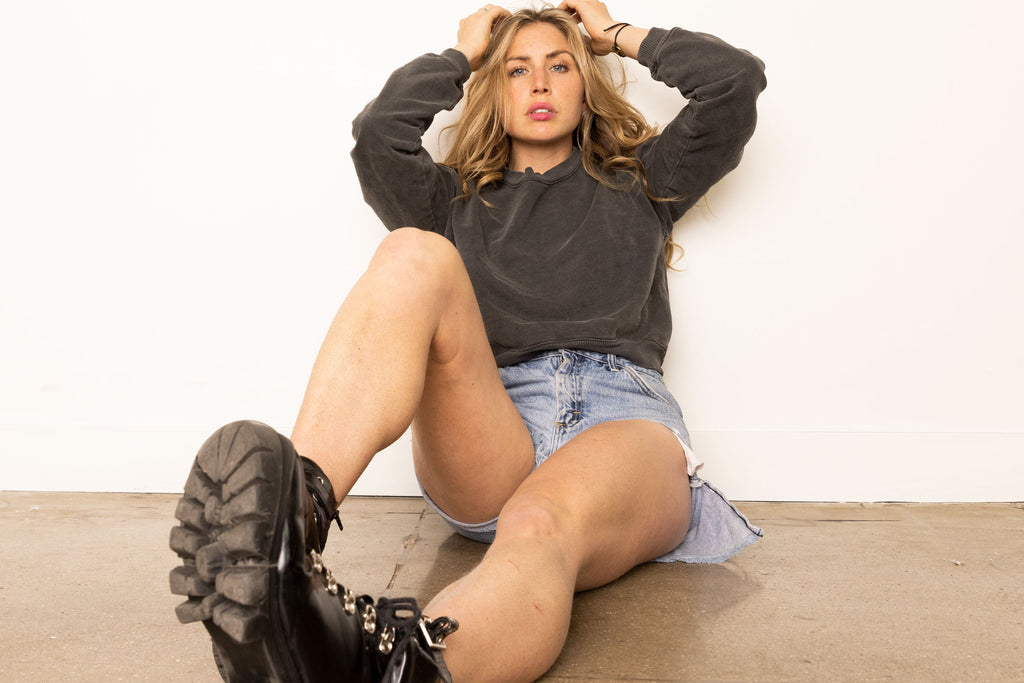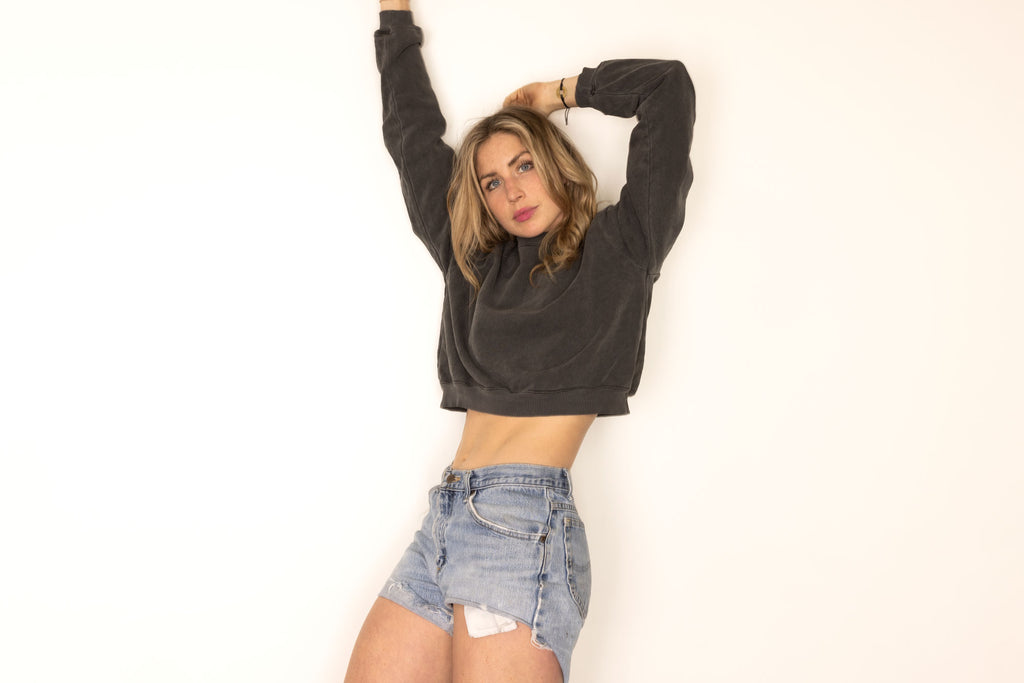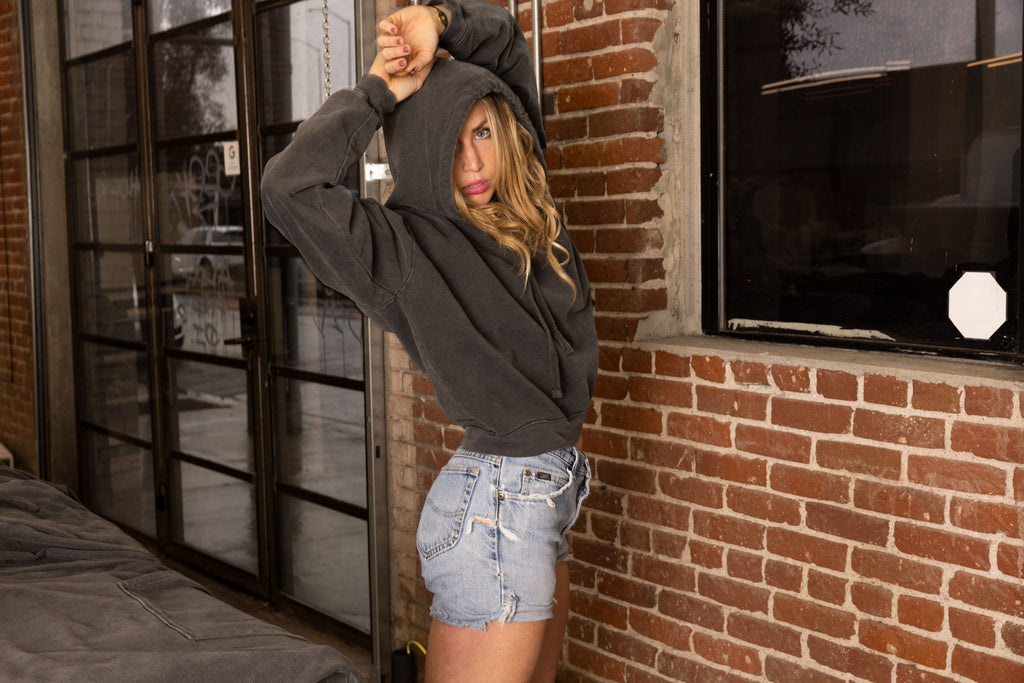Garment dyed vs Piece Dye
February 14 2024 – Ivan Rosario

Unraveling the Distinctions
Discover the differences between garment dyeing and piece dyeing techniques, from vibrant colors to unique variations. Enhance your knowledge now!

Brief Overview of Garment Dyed vs Piece Dye Techniques
Garment dyeing, as the name suggests, involves coloring a finished garment rather than dying the fabric before it is cut and sewn. In this process, completed garments are immersed in a dye bath, allowing the color to permeate the fibers and create a vibrant hue.
The technique gained popularity for its ability to achieve unique color variations and impart a vintage-like appearance that simply can't be replicated by other means. On the other hand, piece dyeing is a method where fabric rolls are dyed before being cut into individual garment pieces.
In this process, large quantities of fabric are submerged in dye baths, ensuring consistent color distribution across all pieces produced from that batch. Piece dyeing offers more extensive options for colors since it allows manufacturers to create large quantities of fabric with uniform hues.
Both techniques, Garment dyed vs Piece Dye have their own set of advantages and limitations that we will explore further in this article. So, whether you're looking for a clothing item with an eclectic flair or one that boasts consistent shades throughout, understanding garment dyeing versus piece dyeing will undoubtedly aid you in making an informed choice.
Garment Dyeing
Definition and Process
Do you ever wonder how your favorite t-shirt gets its luscious, vibrant color? Well, my friend, that's where garment dyeing comes into play.
Garment dyeing refers to a technique where fully constructed garments are dyed after they have been cut and sewn. Unlike traditional fabric dyeing, which occurs before the garment is assembled, garment dyeing allows for a unique approach to infusing color into clothing.
Now, let's dive into the fascinating step-by-step breakdown of the garment dyeing process. First off, the garments are meticulously inspected for any imperfections or loose threads to ensure top-notch quality.
Then comes the pre-washing stage; here, the garments undergo a thorough cleaning process to remove any impurities and excess dyes that might interfere with achieving true color saturation later on. Once clean and ready for their transformation, the garments are submerged in large vats full of specially formulated dyes chosen for their brilliance and long-lasting properties.
The immersion is followed by intense agitation using industrial machines—picture clothes swirling around like artistic tornadoes! This agitation allows each garment to absorb color unevenly, giving it that distinctive vintage-like appearance we all adore.

Advantages
When it comes to advantages of garment dyeing, oh boy, where do I even begin? First off – get ready for eye-popping colors!
Garment dyed clothing offers enhanced color vibrancy and depth that will make you stand out from the crowd. Each piece boasts an individual charm due to uneven absorption of dyes during the process—no two are exactly alike!
It's like wearing your own personal work of art. But wait, there's more!
Garment dyed products also bring optimal comfort and softness thanks to pre-washing before dying takes place. This additional step ensures that the fabric achieves a fantastic level of flexibility and coziness.
Trust me, slipping into a garment dye t-shirt feels like being embraced by a cloud. So not only will you be stunning in vibrant hues, but you'll also feel like you're wearing a little piece of heaven.
Disadvantages
While garment dyeing offers numerous benefits, it's important to consider its limitations too. One of the downsides is limited color options compared to piece dyeing.
Since the garments are dyed as Awhole entities rather than as separate fabric pieces, achieving certain complex or specialty shades can be challenging. So, if you have your heart set on something ultra-specific, it might be trickier to find it in a garment dyed version.
Another aspect to keep in mind is the potential for uneven color distribution on garments. Due to the nature of how the dyes are absorbed during agitation, some areas may appear darker or lighter than others.
Now, for many people, this unevenness adds character and charm to their clothing; however, if uniformity is your jam, garment dyeing might not be your cup of tea. : While garment dyeing provides an array of unique benefits such as vibrant colors and vintage appeal alongside unmatched comfort, it's essential to consider factors like limited color options and potential inconsistencies before diving headfirst into this colorful world!

Piece Dyeing
Keep it Simple but expensive.
When it comes to dyeing fabrics, piece dyeing stands as the more traditional and widely-used method. Unlike garment dyeing, where the garments are dyed in their finished form, piece dyeing occurs prior to the construction of the garment.
This means that fabrics are dyed in their raw state, usually in large rolls or bolts, before they are cut and sewn into various pieces. This technique allows for a different level of control over color distribution and consistency. It is more expensive since it requires massive quantity of rolls. It's considered industrial dyeing. Not that convenient for small orders.
The Journey from Plain to Vibrant
The piece dyeing process starts with the selection of high-quality undyed fabric. Once chosen, this fabric is prepared for coloring by undergoing a series of pre-treatments to remove any impurities or natural oils that may interfere with proper color absorption. After this preparation stage, the fabric is submerged into large vats filled with a desired dye bath solution made from either natural or synthetic dyes.
One critical advantage of piece dyeing lies in its ability to offer a wide range of color choices. Due to its bulk production nature, manufacturers can experiment with various shades and hues without much constraint.
From bold primaries to subtle pastels, piece dyed garments allow for versatile styling options. Although offering an array of colors, it's worth noting that piece dyed products tend to have less vibrancy compared to their garment-dyed counterparts.
The process lacks the additional step of pre-washing that helps soften garments and enhance color absorption during garment dyeing. Additionally, due to consistent bulk production practices involved in piece dyeing, there is often a lack of unique variations in shades as seen in garment-dyed products that can showcase charming irregularities.

Comparison between Garment Dyed vs Piece Dye
Color Variation
When it comes to color variation, garment dyeing takes the crown. The uneven absorption of dye during the process creates a truly distinctive appearance on each garment.
This natural irregularity adds character and depth to the colors, giving them a vintage-like charm. Picture yourself in a gorgeous garment dyed t-shirt that boasts subtle variations in hue, creating an eye-catching effect that sets you apart from the sea of monotonous attire.
On the other hand, piece dyed products offer a more consistent appearance in terms of shade. The bulk production nature of piece dyeing ensures that every item is saturated uniformly with color.
This results in garments where each one looks nearly identical to the next, providing a reliable and predictable aesthetic. While piece dyeing may lack the unique variations found in its garment-dyed counterpart, it compensates with its ability to deliver consistent shades across an entire inventory.

Color Options
While garment dyeing excels at producing visually striking variations within a limited range of colors, it does fall behind when it comes to the sheer number of color options available. Due to the intricacies involved in achieving optimal results through this technique, manufacturers often stick to a curated selection of hues that work best with their process. However, fear not!
Piece dyed products come swooping in to save the day with their wide array of colors ready for your choosing. Whether your heart desires pastels or bold neons, earthy tones or vibrant jewel shades – piece dyed garments have got you covered!
Quality and Comfort Garment dyeing not only offers superior aesthetics but also enhances quality and comfort through its pre-washing stage.
Before dying begins, garments go through multiple rounds of washing to remove impurities and strengthen fabric integrity. This meticulous pre-treatment results in garments that are softer, more breathable, and incredibly comfortable to wear.
With garment dyed pieces, you can experience the luxury of cozy clothing without compromising on style. Conclusion
In the battle of Garment Dyed vs. Piece Dye, both techniques have their own unique advantages but Garment dyed is definitely unique and more powerful in customization. Old school manufacturers doesnt understand this understand this technique.
Garment dyeing stands out with its exceptional color variation and vintage appeal, while piece dyeing shines in its consistency and broad range of color options. Whether you prefer the individuality offered by garment dyed products or the uniformity provided by piece dyeing, both techniques offer something special for everyone.
So go ahead and embrace your personal style - be it bold or subdued, vibrant or earthy - as both techniques have their place in the ever-evolving fashion landscape. Ultimately, it's all about choosing what resonates with you and brings joy to your wardrobe.

0 comments